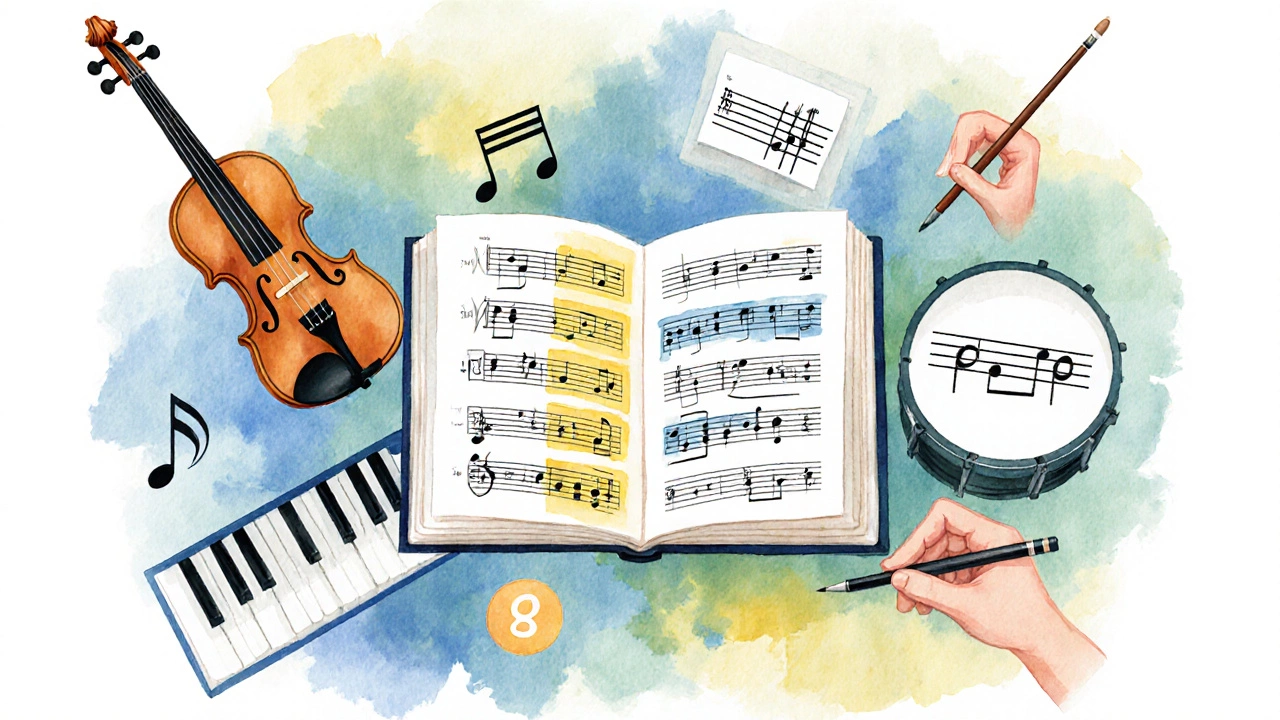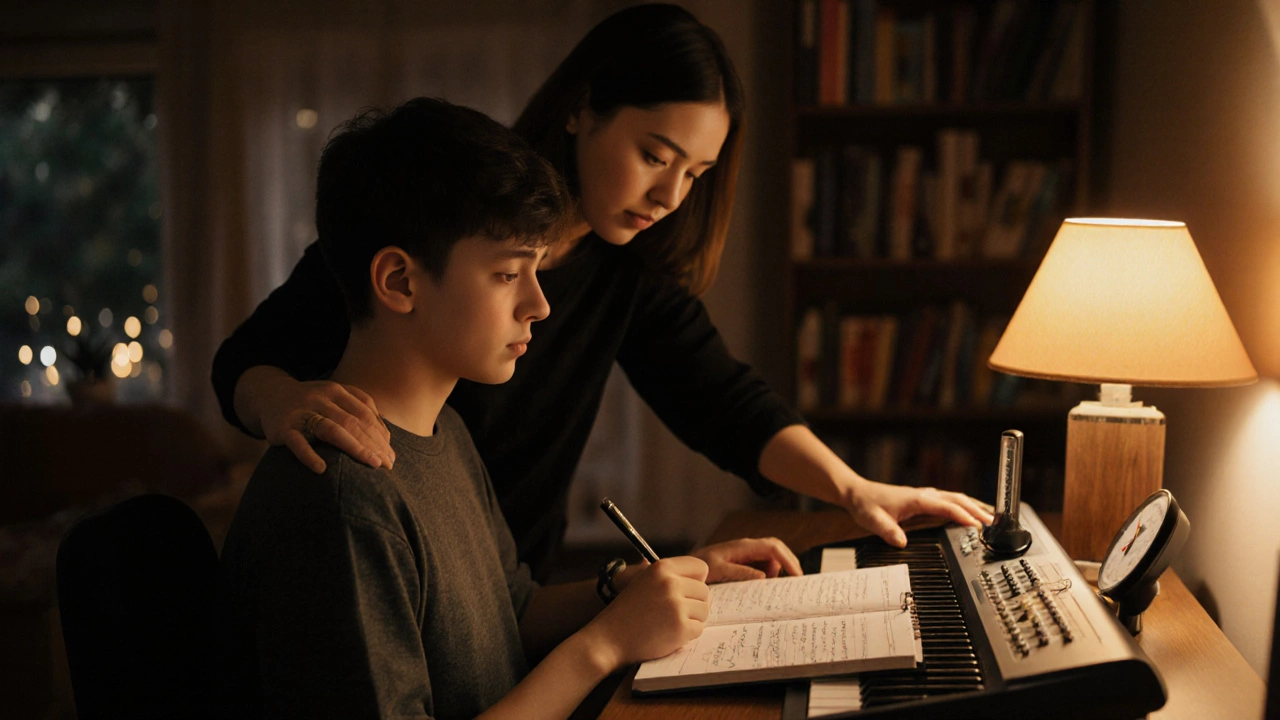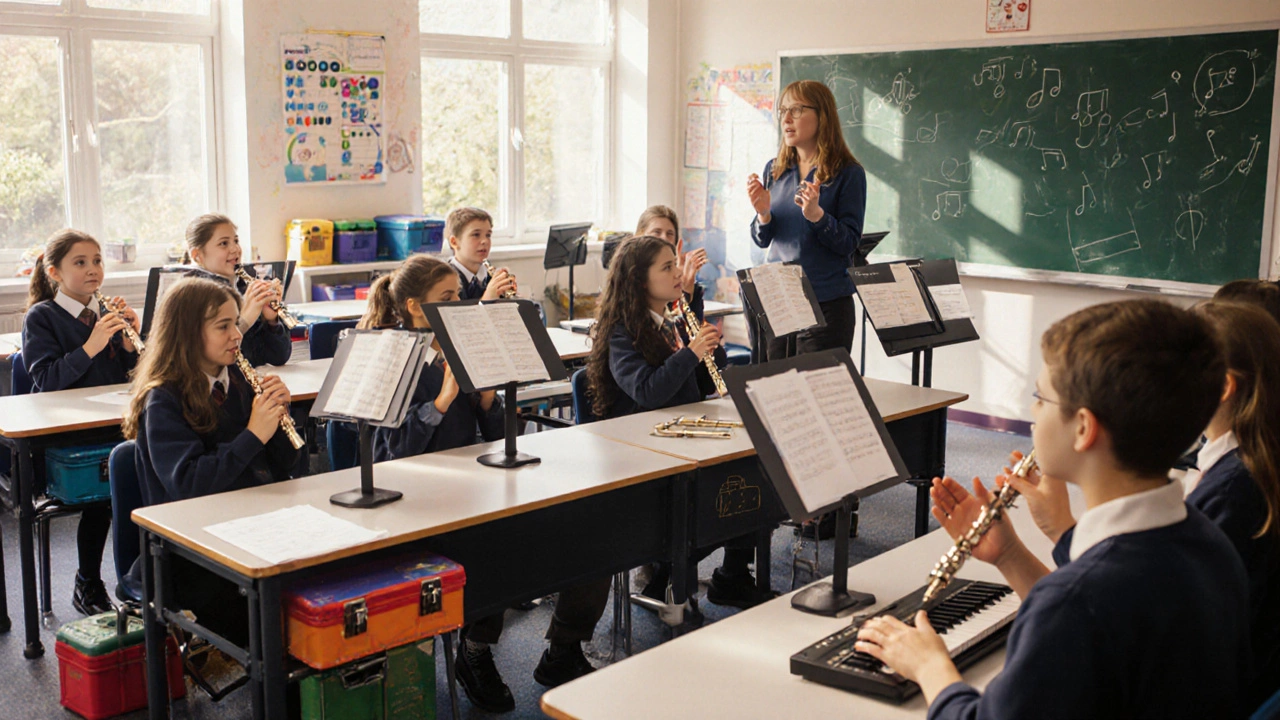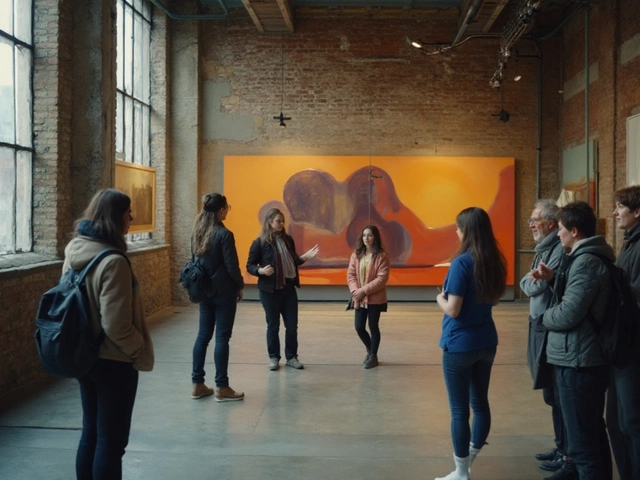Rhythm Practice Tool
Click 'Generate Rhythm Pattern' to start
Ever wondered what music class 8 actually looks like? Most students hit that grade and suddenly find themselves juggling rhythm exercises, sight‑reading, and a little bit of composition. It feels like a whole new world, but the good news is the curriculum is designed to build on what you already know while opening doors to fresh musical ideas.
What is Music Class 8?
Music class 8 is a structured school program for eighth‑grade learners that blends practical performance with foundational theory. It typically runs alongside other core subjects and follows national or regional education standards. The goal is to deepen students' musical literacy, improve aural skills, and encourage creative expression.
Core Topics Covered
In a typical year, you’ll encounter several key areas. Each builds on the last, so the program feels like a logical progression.
- Music theory: Scales, intervals, chords, and basic harmonic analysis.
- Notation: Reading treble and bass clefs, time signatures, and dynamic markings.
- Rhythm: Complex patterns, syncopation, and tempo changes.
- Instrumentation: Introduction to orchestral families, basic playing techniques, and ensemble etiquette.
- Solfège: Sight‑singing using the movable‑do system to train pitch accuracy.
- Composition: Simple melodic writing, rhythm creation, and arranging short pieces.
- Assessment: Performance exams, theory tests, and portfolio reviews.
Typical Curriculum Outline
| Weeks | Topic | Key Skill | Assessment Type |
|---|---|---|---|
| 1‑4 | Review of basic notation and rhythm | Accurate sight‑reading of quarter‑note patterns | In‑class quiz |
| 5‑8 | Major and minor scales | Play all 12 major and natural minor scales | Practical test |
| 9‑12 | Introduction to chords | Identify and construct triads | Theory worksheet |
| 13‑16 | Solfège and ear‑training | Sing intervals accurately using movable‑do | Ear‑training exercise |
| 17‑20 | Ensemble playing | Blend with a small group on simple repertoire | Group performance |
| 21‑24 | Basic composition | Create a 8‑measure melody with accompaniment | Portfolio submission |

How Students Are Assessed
Assessment isn’t just about grading; it’s a way to track growth. Most schools use a mix of formative and summative tools:
- Performance exams: Students play a prepared piece, demonstrating technique, expression, and stage presence.
- Theory tests: Written quizzes covering scales, chords, and notation reading.
- Ear‑training drills: Call‑and‑response activities to gauge pitch recognition.
- Portfolio projects: A short composition or a recorded performance that showcases creativity.
Feedback is usually given right after each assessment, so learners know what to improve before the next milestone.
Tips for Parents and Students
Getting the most out of music class doesn’t require a magic formula, just a few practical habits.
- Practice consistently - Short, daily sessions (15‑20 minutes) beat occasional marathons.
- Use a practice journal to note which sections felt shaky and why.
- Listen actively - Find recordings of the pieces you’re studying and follow the score.
- Ask questions in class - Clarify any notation or theory concept on the spot.
- Take advantage of school resources - Many schools have instrument rentals or extra‑curricular ensembles.

Common Challenges and How to Overcome Them
Every student hits a snag now and then. Here are the usual suspects and quick fixes.
| Challenge | Solution |
|---|---|
| Reading complex rhythms | Clap the pattern slowly, then count aloud before playing. |
| Pitch matching in solfège | Use a tuner app to check each note, then sing it back. |
| Writing melodies | Start with a simple three‑note motif and repeat with slight variation. |
Resources and Further Reading
Want to explore beyond the classroom? These resources line up well with the grade‑8 syllabus.
- MusicTheory.net - Interactive lessons on scales, chords, and rhythm.
- Teoria.com - Free ear‑training exercises.
- "The Musician's Way" by Gerald Klickstein - Straight‑forward guide for teen musicians.
- Local community music programs - Many offer ensemble rehearsals for middle‑school students.
Frequently Asked Questions
What age are students typically in music class 8?
Most schools place eighth‑graders between 13 and 14 years old, so the class aligns with early teenage development.
Do I need to own an instrument for music class 8?
Not always. Many programs provide classroom instruments, but having a personal one-like a recorder or keyboard-can speed up practice.
How much homework is typical?
Expect about 30 minutes of theory work and 20 minutes of instrument practice per week, plus occasional project time.
Can I skip the theory part if I’m mainly interested in performance?
Most schools require a minimum theory grade to pass the class, so skipping isn’t an option. However, theory often improves performance skills.
What’s the best way to prepare for the end‑of‑year recital?
Start rehearsals early, break the piece into sections, and record yourself to spot trouble spots.







